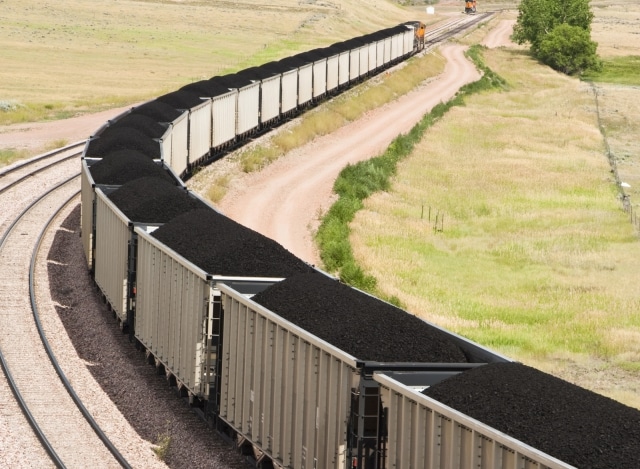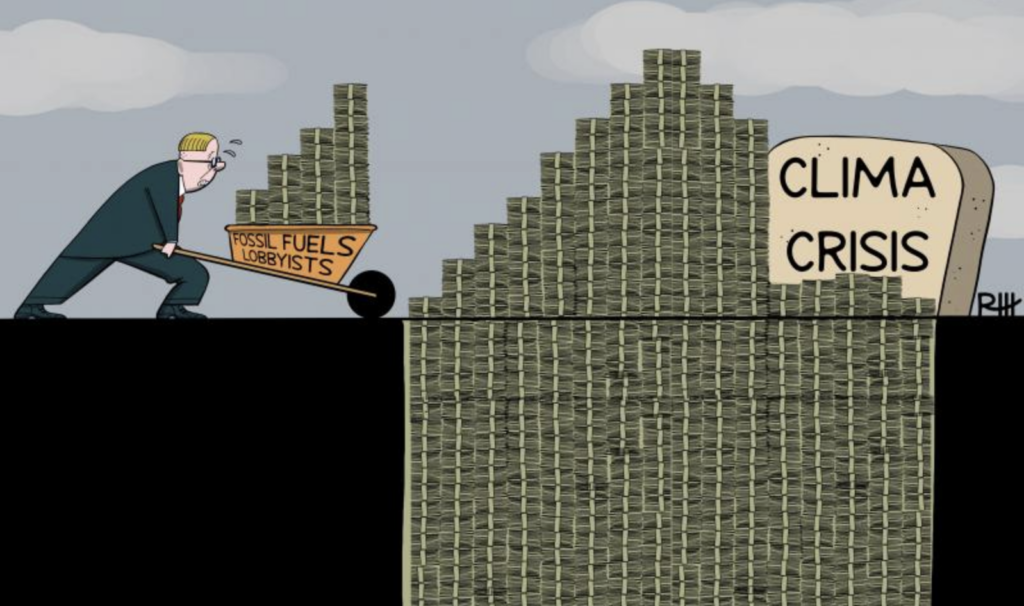A newly released analysis by the Climate Accountability Institute concludes that fossil fuels extracted from federal lands release carbon equal to a quarter of all U.S. greenhouse gas emissions. The rate has stayed roughly consistent from 2003 to 2014.
When it comes to coal, the rate was even higher than average last year, the report concluded. “In 2014, two-fifths (40.2 percent) of U.S. coal production was from leases on Federal Lands; production on Indian Lands accounted for an additional 1.9 percent of U.S. coal production,” wrote Rick Heede, author of the analysis.
“My calculations find that the Department of Interior’s management of leases authorizing the extraction of fossil fuels on the public lands under its management results in approximately 25 percent of U.S. carbon emissions in the past decade,” Mr. Heede added in a statement. “25 percent is very significant for one single legal entity, governmental or private, and responsibility for 3-4 percent of global fossil fuel emissions should warrant the attention by policymakers and the White House.”
The report comes at a time when the Department of the Interior is considering reforms to its mineral rights leasing program, which has come under fire from taxpayer advocates as well as environmental groups.
The leasing program — which charges unusually low rates for fossil fuels from federal lands due to a series of loopholes in federal regulations — creates de facto subsidies for the fossil fuel industry that have drawn direct Congressional attention.
“You can typically lease a ton of coal off federal land for one dollar or less,” Sen. Maria Cantwell (D-Wash.), said during a recent Senate energy committee hearing on President Obama’s 2016 proposed budget for the Department of the Interior. “The taxpayer gets one dollar. Then years later we have to deal with almost two tons of carbon dioxide from that one ton of coal and the government current best guess is that two tons of carbon pollution will cost the America public over 70 dollars in damages.”
A June 2013 report by the Interior Department’s own Inspector General found that the Coal Leasing Program undervalued leases by millions of dollars. A December 2013 Government Accountability Office report listed numerous flaws in how the Bureau of Land Management calculated the fair market value of leases, concluding that the process “lacks sufficient rigor and oversight.”
All told, over the prior 30 years, undervalued sales of public coal cost taxpayers $28.9 billion, a 2012 report by the Institute for Energy Economics and Financial Analysis concluded.
“Charging a fair and accurate price on federal fossil fuels is essential to ensure that polluting corporations pay the true economic, environmental and social costs of their destruction,” said Marissa Knodel, a campaigner for Friends of the Earth, which commissioned the analysis by Mr. Heede.
The report comes at a time when global carbon levels are reaching new highs.
In March, for the first time since record-keeping began, atmospheric carbon dioxide levels were over 400 parts per million (ppm) at every monitoring station worldwide. Findings like these are likely the reason that former U.N. Secretary General Kofi Annan told The Guardian earlier this month that his biggest fear for the planet is: “That the world is reaching the tipping point beyond which climate change may become irreversible.”
President Obama has signed international agreements that pledge to cut carbon emissions by roughly 25 percent below 2005 levels within the next decade. But meanwhile, his Interior Department’s leasing programs continue to subsidize the production of fossil fuels.
Fossil fuel subsidies have drawn international attention for promoting continued and accelerated greenhouse gas emissions. Worldwide, renewable energy benefitted from $120 billion worth of incentives — less than a quarter of the $550 billion in subsidies received by oil, gas and coal, a 2014 report by the International Energy Agency concluded.
“The huge subsidies fossil fuels enjoy worldwide gives incentives to their consumption,” Fatih Birol, chief economist at the IEA, said at a news conference in London when that report was released, “which means that I’m paying you to pollute the world and use energy inefficiently,”
Mr. Heede has previously authored research that showed that just 90 corporations are responsible for roughly two thirds of greenhouse gas emissions. His 2014 article in the peer-reviewed journal Climatic Change traced 63 percent of the world’s industrial CO2 emissions between 1751 and 2010 to 90 fossil fuel and cement companies.
His most recent work highlights the role played by the U.S.’s federal leasing program. The report does not take into account where the fossil fuels are burned – whether they are consumed domestically or exported – but instead compares the total emissions from fossil fuels from federal lands against total U.S. carbon emissions. It does take into account the fact that not all of the fossil fuels are ultimately burnt but sometimes are used for by the chemical or agricultural industries, for example.
The analysis is conservative, Mr. Heede wrote, in part because it takes data reported to the government at face value, though production reports are generally not independently audited, and because it focuses primarily on the carbon dioxide emissions from burning fossil fuels, leaving out methane leaks.
“The analysis excludes several sources of emissions, such as ubiquitous flaring, vented CO2 from natural gas processing, lease holders ’ field use of produced fuels, and all methane emissions that would have, based on my analysis , added 6.0 percent to the combustion of oil and liquids, 29.5 percent to natural gas, and 8.5 percent to coal,” Mr. Heese wrote in his report.
A White House report released last July, entitled “The Cost of Delaying Action to Stem Climate Change,” estimated that delaying federal responses to global warming would cost the U.S. economy $150 billion per year.
Predictions like these have climate campaigners calling for a suspension of fossil fuel extraction from federal lands, given the role these fuels play in U.S. emissions.
“If the Department of Interior incorporated those costs into their leasing decisions, it would become clear that the only safe and responsible thing to do with fossil fuels is to leave them in the ground,” said Friends of the Earth’s Knodel.
Photo Credit: “rail cars loaded with coal being transported from nearby mines to power plants in Wyoming,” via Shutterstock.
Subscribe to our newsletter
Stay up to date with DeSmog news and alerts







